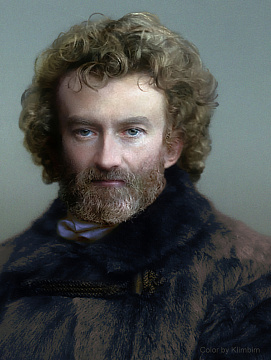Profile
Nikolai Miklukho-Maklai’s biggest achievement as a researcher was his contribution to the debate on whether different races of humankind belonged to different species. He was the first to provide an anthropological description of the Melanesian population and proved that people of this race can be found across Western Oceania and Southeast Asia. As an ethnographer, he left valuable materials describing how Papuans and other peoples across Oceania and Southeast Asia lived, worked and organised their households. In his observations, Miklukho-Maklai was always to the point, and for some regions of Oceania his writings remain the only source of information to this day.Biography
- Nikolai Miklukho-Maklai was born on 17 July (5 July under the Julian calendar) 1846 in Rozhdestvenskoye (present-day Yazykovo-Rozhdestvenskoye, Okulovsky Municipal District, Novgorod Region) into a family of an engineer.
- In 1863, he enrolled at St Petersburg University, but was expelled in 1864 for taking part in a student movement. Moreover, he was banned from studying in Russian higher education institutions.
- In 1864, Miklukho-Maklai enrolled in the Philosophy Department at Heidelberg University, and in 1865 joined the Leipzig University, where he attended medical school. In 1866, Miklukho-Maklai moved to Jena, where he also attended the medical school of a local university and studied the comparative anatomy of animals. He attended lectures by Ernst Haeckel and travelled with him to the Canaries and Morocco as an assistant.
- In 1868, Miklukho-Maklai graduated from the University of Jena.
- In 1869, he travelled to the Red Sea coast to study the marine fauna and returned to Russia the same year.
- In his early studies, Miklukho-Maklai focused on comparing the anatomy of sea sponges, studied the shark’s brain, and other zoological subjects. During his travels, he also made valuable geographical observations. He also tended to believe that nature and the social environment determine racial and cultural traits. To prove this theory, Miklukho-Maklai decided to travel to Pacific islands to study the Papuan race.
- With the assistance of the Russian Geographical Society, Miklukho-Maklai left for New Guinea in late October 1870 aboard the Vityaz military ship. He started with New Guinea’s northeastern coast (1871-1872), which has since been called the Maklai Coast, where he stayed for 15 months living among the Papuans, winning their love and trust with his friendly and affable attitude.
- In 1873, he visited the Philippines and Indonesia. In 1874, he reached New Guinea’s southwestern coast. In 1874-1875, Miklukho-Maklai made two trips to the Malay Peninsula, where he studied the Semang and the Sakai people. In 1876, he travelled to Western Micronesia in Oceania and North Melanesia (a group of islands in the Pacific). He then returned to the Maklai Coast to spend 1876 and 1877 there, and from there wanted to sail to Russia, but a serious illness upended these plans. Miklukho-Maklai had to settle in Sydney, Australia, where he lived until 1882. He founded the first biological station near Sydney. It was during this period that he travelled to Melanesia (1879) and visited New Guinea’s southern coast in 1880. In 1881, he returned there one more time.
- In 1882, Miklukho-Maklai came to Russia and gave several public lectures at the Geographical Society on his voyages. The Society of Devotees of Natural Science, Anthropology, and Ethnography awarded him a gold medal for his studies.
- Miklukho-Maklai then toured Berlin, Paris and London to present his findings, after which he headed for Australia, making his third stop on the Maklai Coast along the way in 1883.
- He stayed in Sydney from 1884 through 1886, and then returned to Russia, devoting the last years of his life to preparing his diaries and research materials for publication. In 1886, he donated the ethnographical collections he assembled during his travels in 1870-1885 to the Academy of Sciences, and these artefacts are now preserved by the Museum of Anthropology and Ethnography.
- On 14 April (2 April under the Julian calendar) 1888, Nikolai Miklukho-Maklai passed away in St Petersburg, and was buried at the Volkovskoye cemetery.



